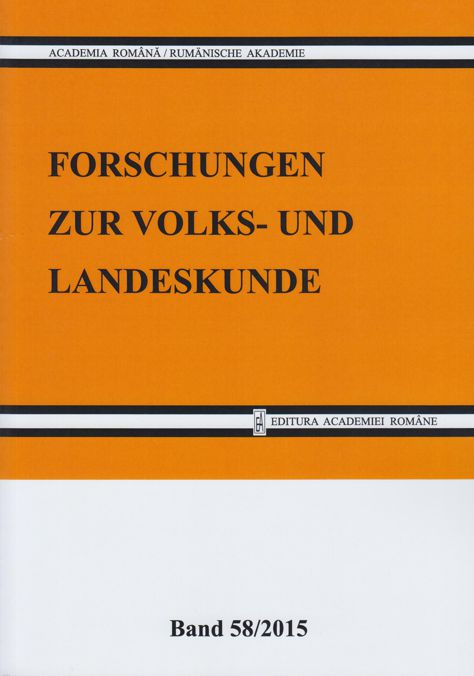Die Typologie der rautenförmigen Beschläge aus Friedhöfen des 10. Jahrhunderts
The Typology of Rhombic Appliqués/Mounts discovered in 10th Century Burial Grounds
Author(s): Aurel DragotăSubject(s): Archaeology, Cultural history, 6th to 12th Centuries
Published by: Editura Academiei Române
Keywords: rhombic appliqués, clothing, ancient Hungarian environment, 10th century
Summary/Abstract: Rhombic appliqués are decorative elements arranged in U or V form on the collar of the clothing, which was used especially by middle and upper class of the ancient Hungarian environment. Compared to other clothing items, their usage has been documented and evidenced only for the first six decades of the 10th century. Made of cast bronze and silver, sometimes with traces of gilding, these were evidenced especially in women’s graves and more rarely in those belonging to men. Their origin should be sought in the ancient Hungarian tombs in the environment of the Eastern area, where they were usually used as ornaments for hair banderols. From a typological point of view, we have identified the types 83a-83h, which show certain differences regarding the clothing edges and the central decorative element. Type 83b is combined with bone combs (Eperjes/M. 5), bracelet 4 (Jázova/M. 6; Hajdúböszörmény-Bodaszőlő-Büdöskút/M.7), twisted bracelets with hooks (Hajdúböszörmény-Bodaszőlő-Büdöskút/M.7) and twisted bracelets with hook and eye fastening terminals (Sárrétudvari-Hízóföld/M. 118). Another correlation can be noticed in the case of types 83b and 83c2, which appear in funerary inventories with sickles (reaping hooks) (Karos II/M. 70; Červenik/M. 4) and pottery (Červenik/M. 4). Lamellar bracelets with rounded or hook shaped terminals (2 Giesler) appear exclusively with types 83b, 83c1- 83c3, 83e2 and 83e4. Harness items and pieces (stirrups, bridles, trapezoidal buckles) are combined with types 83c2 (Bashalom/M. f, h, j), 83b (Eperjes/M. 5; Karos II/M. 47; Şiclău/M. 11), 83c1 (Hódmezővásárhely-Kopáncs/M. 8), 83e2 (Sered. M2/53) and 83e4 (Madaras/M. 6). The only weapon pieces (sabres, axes) appear in association with types 83c2 (Kenézlő/M. 21), 83g (Biharkerestzes-Bethlen Gábor utca 25/M. 1) and 83c2. An interesting combination is evidenced in Kecel/M. 1, where type 83b is associated with a pair of crescent-shaped granulated earrings, bearing a rosette with four petals in the center of the lower arch. The pair of earrings from Kecel/M. 1 is assigned and attributed to the first generation of the conquering Hungarians, therefore its provenance as a war spoil of the year 934 can be excluded. The oldest type forms of rhombic appliqués seem to be 83b, 83e2, 83e3 and 83g in terms of association with Saltovo earrings (Karos II/M. 4, Karos II/M. 47, Vörs/M. 406; Pétervására-Laktanya/M. 1-55; Visonta-Fel¬sőrét/M. 22), clawed ring/ring with “claws” (Pétervására-Laktanya/M. 1-55), sabre and coin belonging to Hugo de Provence/Lotar II (Biharkerestzes-Bethlen Gábor utca 25/M. 1). Rhombic ornaments are also associated with other pieces in funerary inventories: rings 13, pressed discs, shoe appliqués, beads, cowrie shells and globular shaped buttons. Harness pieces were also evidenced in some tombs with appliqués of type 83b and 83c2, along with horse offerings (Eperjes /M. 5; Karos II/M. 47; Bashalom/ M. 21; Kenézlő/M. 21).
Journal: Forschungen zur Volks- und Landeskunde
- Issue Year: 2015
- Issue No: 58
- Page Range: 7-24
- Page Count: 18
- Language: German
- Content File-PDF

